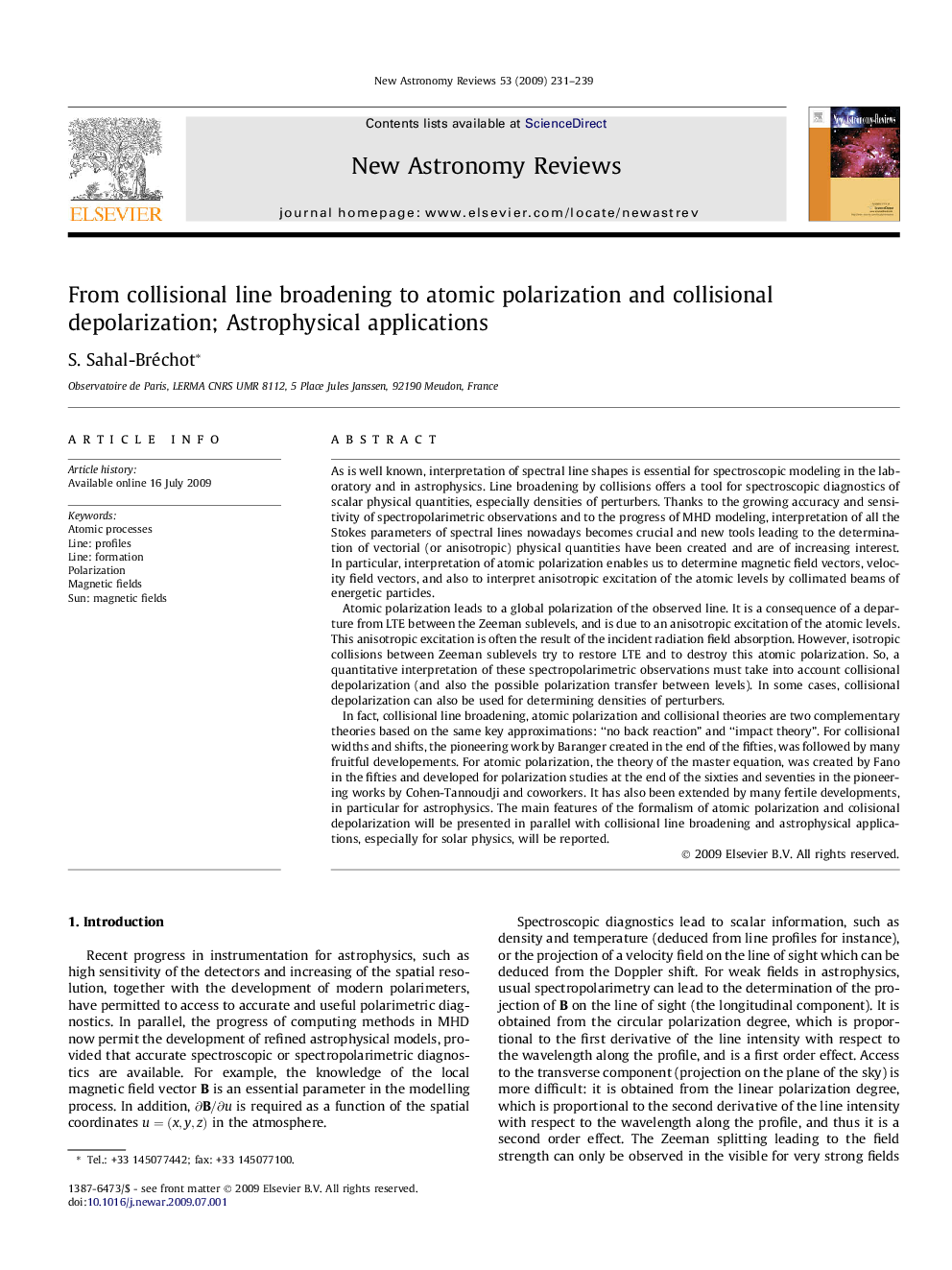| کد مقاله | کد نشریه | سال انتشار | مقاله انگلیسی | نسخه تمام متن |
|---|---|---|---|---|
| 1780098 | 1523792 | 2009 | 9 صفحه PDF | دانلود رایگان |

As is well known, interpretation of spectral line shapes is essential for spectroscopic modeling in the laboratory and in astrophysics. Line broadening by collisions offers a tool for spectroscopic diagnostics of scalar physical quantities, especially densities of perturbers. Thanks to the growing accuracy and sensitivity of spectropolarimetric observations and to the progress of MHD modeling, interpretation of all the Stokes parameters of spectral lines nowadays becomes crucial and new tools leading to the determination of vectorial (or anisotropic) physical quantities have been created and are of increasing interest. In particular, interpretation of atomic polarization enables us to determine magnetic field vectors, velocity field vectors, and also to interpret anisotropic excitation of the atomic levels by collimated beams of energetic particles.Atomic polarization leads to a global polarization of the observed line. It is a consequence of a departure from LTE between the Zeeman sublevels, and is due to an anisotropic excitation of the atomic levels. This anisotropic excitation is often the result of the incident radiation field absorption. However, isotropic collisions between Zeeman sublevels try to restore LTE and to destroy this atomic polarization. So, a quantitative interpretation of these spectropolarimetric observations must take into account collisional depolarization (and also the possible polarization transfer between levels). In some cases, collisional depolarization can also be used for determining densities of perturbers.In fact, collisional line broadening, atomic polarization and collisional theories are two complementary theories based on the same key approximations: “no back reaction” and “impact theory”. For collisional widths and shifts, the pioneering work by Baranger created in the end of the fifties, was followed by many fruitful developements. For atomic polarization, the theory of the master equation, was created by Fano in the fifties and developed for polarization studies at the end of the sixties and seventies in the pioneering works by Cohen-Tannoudji and coworkers. It has also been extended by many fertile developments, in particular for astrophysics. The main features of the formalism of atomic polarization and colisional depolarization will be presented in parallel with collisional line broadening and astrophysical applications, especially for solar physics, will be reported.
Journal: New Astronomy Reviews - Volume 53, Issues 7–10, July–October 2009, Pages 231–239